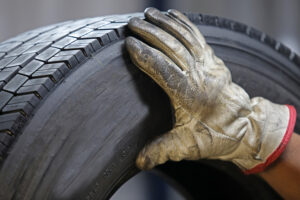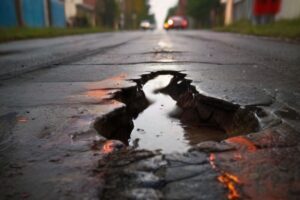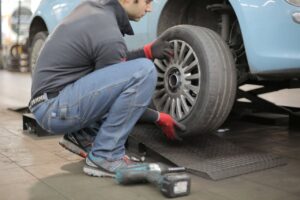How To Identify Tyre Sidewall Damage
Tyre sidewall damage is an important factor to consider when it comes to safety on the roads and is often something that is overlooked. Many motorists are guilty of assuming their tyres are safe to drive on if there are no obvious signs of damage such as a flat tyre. In this article, we’re looking at the importance of checking your tyres for signs of damage and how to spot them. Driving with a damaged sidewall puts you and others at risk of an accident, so it is very important to ensure tyres are properly maintained so they can perform their best.
Types of tyre sidewall damage – what to look for
Bulges, bumps or bubbles
The tyre’s sidewall should be free of any bumps or bulges. Bulges are usually caused by too much impact with kerbs or potholes. This is known as an impact break and is where the internal structure of the tyre has been weakened.
It is important to identify bulges as they can lead to tyre blowouts. Another cause of bulging in the tyre’s sidewall is due to overinflation.
Tears or cuts
Unwanted debris on the road, or even potholes can cause cuts and tears to a tyre, usually on the sidewall. If you notice a cut or tear on your tyre it is important to have it checked by a professional as this will get worse over time.
It is important to check your tyres for the above damage every two weeks.
Can you drive with tyre sidewall damage?
A damaged sidewall is dangerous as it can lead to much larger problems including a tyre blowout. We recommend getting any sidewall damage you notice checked by a professional before driving your car.
Can a damaged sidewall be repaired?
Damage to a tyre’s sidewall is often unable to be repaired due to the damage to the tyre’s structure that has been caused. Unlike punctures which affect one area, sidewall damage indicates a much larger problem with the tyre’s internal structure which once damaged is unable to be repaired.
How to avoid tyre sidewall damage
Although there’s no guarantee that you will completely avoid damage to your tyre’s sidewall, we do have some advice for things to look out for on the road or preventative measures you can take. These include:
Avoid unnecessary impact on your tyres
As impact with kerbs and potholes are one of the leading causes of tyre sidewall damage, it is a good idea to try and avoid these if you can. If you are parking on a kerb, make sure you slow down as you mount the kerb to reduce the impact. Try to avoid driving over potholes altogether as they not only cause damage to your sidewall but can also cause alignment issues and much more, leading to quicker tyre wear.
Ensure your tyre pressure is correct
Driving with the incorrect tyre pressure (having your tyres under or overinflated) can put unnecessary force and pressure on your tyre’s sidewalls. Over time this will exert the sidewall leading to bulges or even worse, a tyre blowout.
Keep your tyres clean
You may think that a tyre’s surface can handle anything since it is regularly exposed to the elements, however, it is very important to watch out for any spilt oils or solvents that could be on your tyres – whether this be from your home garage or picked up driving through dirty water. This is because some materials soften your tyre’s compounds, leading to sidewall damage. Clean any oils or mysterious liquids off with washing up liquid and water as soon as you can.
To conclude, there are simple steps to take to look after your tyres and attempt to avoid sidewall damage. It is important to check your tyres for sidewall damage every two weeks in order to keep yourself and other motorists safe and to maintain your tyres as best you can. If you do notice sidewall damage, have this checked by a tyre professional before you continue to drive with it. If you do find yourself needing new tyres, etyres stocks a wide range of premium, high-quality tyres from leading brands such as Bridgestone, Goodyear and Pirelli.




